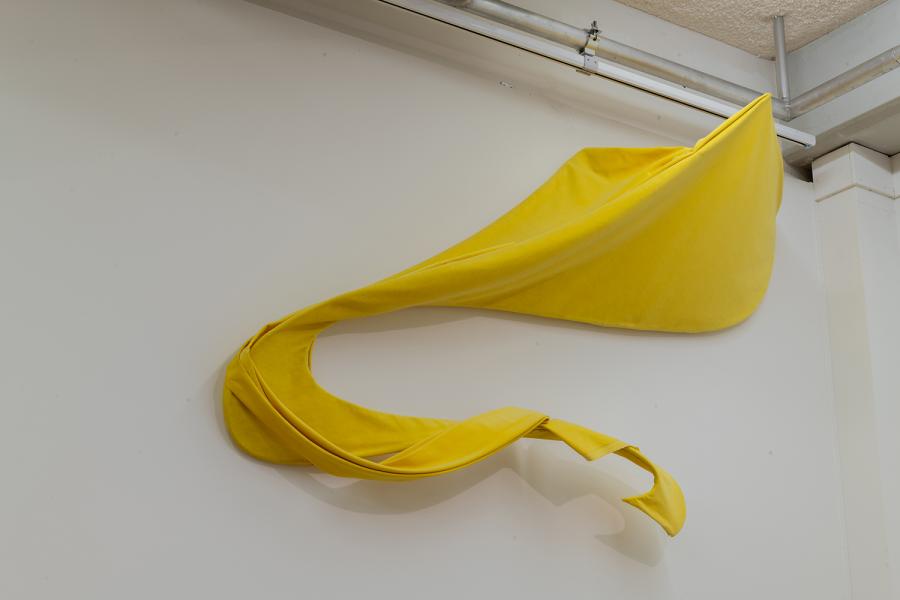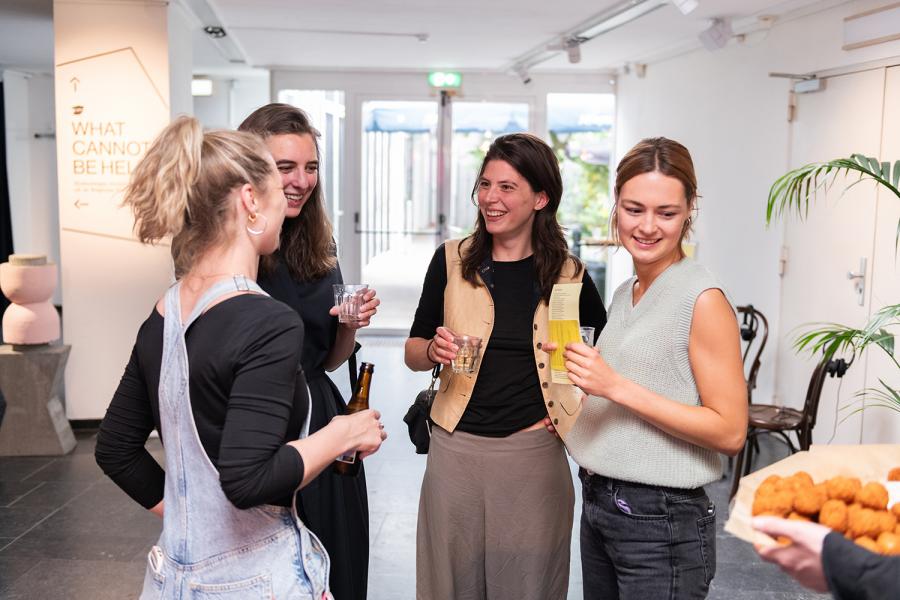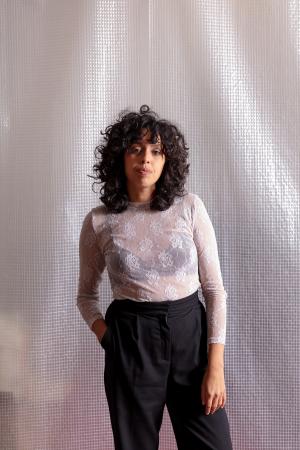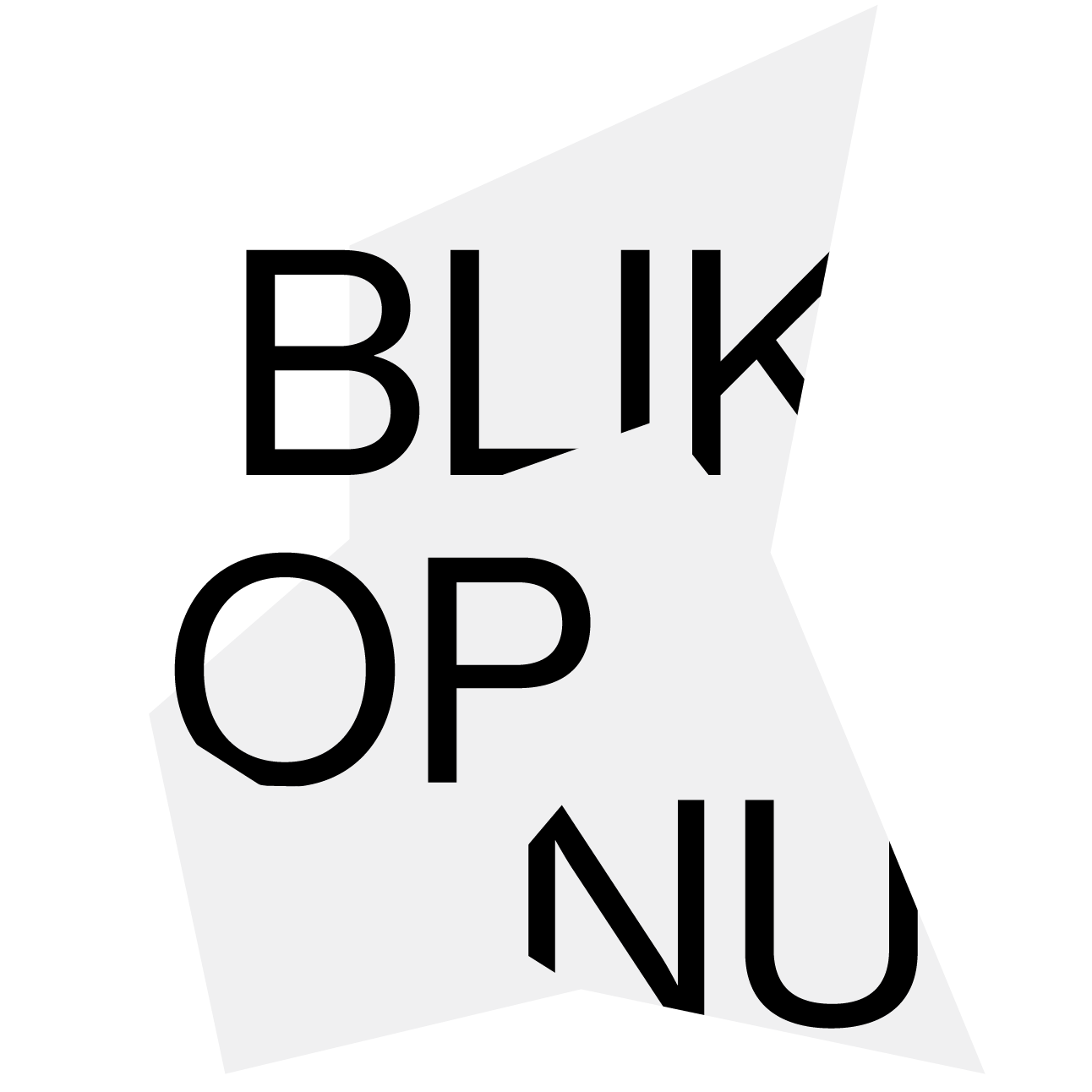What Cannot Be Held
Contemporary voices in Belgian art
A look at the Mu.ZEE collection
De Brakke Grond and Mu.ZEE are entering into a collaboration over the next three years to exhibit Flemish artists in the Netherlands. While the museum in Ostend is closed for renovation, Mu.ZEE will continue to make its collection accessible through a number of cooperative collaborations both within and outside of Belgium. During the next few years, de Brakke Grond and Mu.ZEE will invite a series of Dutch curators to put together exhibitions featuring contemporary work from the collection. These exhibitions will be presented in de Brakke Grond in Amsterdam.
For the first of these, which will run from 17 May thru 13 July 2025, de Brakke Grond has asked curator and Museum Cobra director Suzanne Wallinga to compile an exhibition in cooperation with curator Ilse Roosens of Mu.ZEE and member of de Brakke Grond’s artistic staff Sophie Dogterom.
In What Cannot Be Held, Suzanne Wallinga is creating an inspirational group exhibition centred around humanity’s vulnerable position in an ever-changing world.
Featuring work by: Danai Anesiadou, Anouk De Clercq, Edith Dekyndt, An van. Dienderen, Lili Dujourie, Anne-Mie Van Kerckhoven, Marie-Jo Lafontaine, Valérie Mannaerts , Katja Mater, Angyvir Padilla, Tramaine de Senna.
About the exhibition
What Cannot Be Held brings together a diverse group of artists who, each in their own way, investigate the precarious position of humanity in a world that is constantly in flux. This exhibition examines themes including the instability of social relationships, the fragility of identity and the spaces between past, present and the imagination. At a time when social structures are shifting and certainties are crumbling, the works included in the exhibition provide space to think about what it means to be a human being in this world in transformation.A striking aspect is how various generations of artists approach this theme. Where older artists explore these spaces in a formal, more universal way, younger makers adopt a more personal approach – through their family histories, memories and immediate surroundings. These are works of art that invite the visitor to consider vulnerability, the power of radical empathy, and the tensions between interconnectedness and loss. They also explore liminal spaces: between dream and reality; culture and nature; the visible and the intangible.
Radical empathy and vulnerability
Anouk De Clercq (1971) investigates the power of radical empathy as a means of exploring alternative worlds. Her video installation Helga Humming (2019) is a sensory experience that engages with both the visual and the emotional. The polyphonic sounds and presence of a lone performer invite the viewer to feel the fragility of human interaction; a theme that is also central to the work of Edith Dekyndt (1960).
Dekyndt’s mysterious, richly imaginative work combines video, slide projections, sculpture and audio to probe the invisible and the ephemeral. Her video Provisory Object 03 (2004) shows the fragility of a soap bubble, reflecting the instability of social relations and the vulnerable situation of mankind. This work was recorded in Kinshasa, Democratic Republic of the Congo.
Both artists make use of simplicity and vulnerability to build emotional resonance. In Helga Humming (2019), De Clercq gives a contemporary interpretation of classical portraits, with actress Helga Davis evoking a modern take on renaissance portraiture. Their cooperation with musical artist Vessel, who weaves a hypnotic soundscape, makes the installation a poetic space in which the viewer experiences the complexity of human presence. In this way De Clercq, like Dekyndt, captures the everyday and the fleeting moment.
Materiality and liminal areas
Marie-Jo Lafontaine (1950) also explores the materiality of the moment in her work, but does so from an abstract, minimalist perspective. Lafontaine has been working since 1977 on monochrome woven works in which colour and structure play an essential role. She is inspired by the avant-garde movements of the late 1960s and makers of minimal art, translating their theories on the immateriality of colour for the medium of textiles. This results in sculptural textile works that free themselves from the traditional understanding of textiles as applied art and strive for autonomy as an artform in their own right. Like Dekyndt and De Clercq, Lafontaine reflects on the fragile interplay between material and idea, and between the visible and the intangible.
Lili Dujourie (1941) moves between painting, sculpture and photography, exploring in her work the boundaries of materials and forms. She has been playing with the contrariety of materials since the 1960s: soft and hard; supple and unbending. Her work creates a subtle tension between floor and wall, movement and stillness. She looks for the spaces between, the folds that distort space, time and perception. Each of her works is a fragment, an interplay of presence and absence evoking a poetic reflection on impermanence and vulnerability.
These themes of marginality, the fragility and ambiguity of the moment, are likewise strongly present in the work of Valérie Mannaerts (1974). As a sculptor and painter, Mannaerts investigates the physical and symbolic qualities of materials and objects. Her hybrid, precarious sculptures blur the dividing line between image and object, inviting the viewer to experience the ambiguity of the materials. Diamond Dancer (2010), a room-divider depicting a figure in motion, creates a tension between the vulnerability of the material and the strength it represents. The work resists direct interpretation, requiring preverbal observation.
As in the work of Dujourie, which plays a subtle game of presence and absence, Mannaerts presents a work that constantly adjusts to the perception and interpretation of the viewer. Both artists probe the transience of time, space and materiality, creating an experience that interrogates the moment itself.
New perspectives
The installations and performances of Angyvir Padilla (1987) likewise bear a comparable ambiguity, opening up new dimensions both physically and conceptually and exploring the boundaries between reality and interpretation. Central to her work is a desire for familiarity with the unattainable. Padilla works with rough materials and fragmentary prints from her personal photo archive, interrogating linear time and gravity, simultaneously making reference to her mother’s clothing store in Caracas. Her projects are often the result of intimate collaborations, rooted in friendship and family, which create a sensory experience that leaves the viewer in a state of wonder and dissonance.
Like Padilla, Danai Anesiadou (1977) opens up new perspectives on today’s world. The dynamic field of tension with which Padilla works – where a desire for familiarity meets the impossibility of achieving this – is also central to Anesiadou’s practice. Her intriguing, mutable oeuvre interweaves personal and metaphysical musings with influences from the cinema, occult studies, surrealism and Greek antiquity. Her work gives a socio-political commentary on the complex crises confronting us. Like Padilla, Anesiadou investigates invisible, oppressed and dark aspects of reality – for example, the way our histories are written, or the hidden structures and political processes that exercise power over us, while she exposes the extreme polarisation and false oppositions that define our contemporary experience.
Identity and social reflection
Both Anne-Mie Van Kerckhoven (1951) and Tramaine de Senna (1981) explore the boundaries of representation and identity, albeit in different ways. Van Kerckhoven combines a range of different media, such as drawings, paintings, video-installations and computer animations, to create artworks that reflect social structures and individual perceptions. Her emphasis is on the representation of women, critically analysing media images and exposing gender-related power dynamics. Her work fulfils a social-critical role, while at the same time offering the therapeutic dimension of art acting as a source of healing and reflection.
Tramaine de Senna also investigates identity, but through an expressive visual language that stresses the field of tension between ebullience and internalised violence. In her sculptures, she combines richness of materials with critical reflections on history and identity. In MK Ultravette (2018), she takes filmed images of women in domestic settings from popular culture and places these within the world of art, challenging viewers to think about their own relationship to the mass media and cultural consumption.
Temporal structures and simultaneous translation
Katja Mater (1979) and An van. Dienderen (1971) each in their own way explore the outer limits of perception and simultaneous translation. While Mater focuses on the possibilities and limitations of photographic and cinematographic media, Van. Dienderen addresses the relationship between observation, translation and representation.
Mater’s work sets out from a reflective process that foregrounds the exhibition context and the dialogue between medium and environment. In her work, she combines abstract geometric compositions with the precision of analogue recording, thereby examining the rules and structures of time and space.
Van. Dienderen’s work operates at the intersection of documentary, anthropology and visual art. Her short film Cherry Blossoms (2012), recorded in the European Parliament, investigates how simultaneous translators strive to convey images and meanings between cultures and languages. By focusing on the invisible but crucial role of these interpreters, Van. Dienderen poses questions concerning how the unknown can be captured by images and language, or in fact can elude these.
The exhibition’s title, What Cannot Be Held, is inspired by the words of the interpreter in Cherry Blossoms. It stresses the central tension within the work of the artists in the exhibition: the impossibility of recording, translating or understanding everything. What Cannot Be Held is an invitation to pause and consider the elusive – the fragility of time, language and human experience.












































































